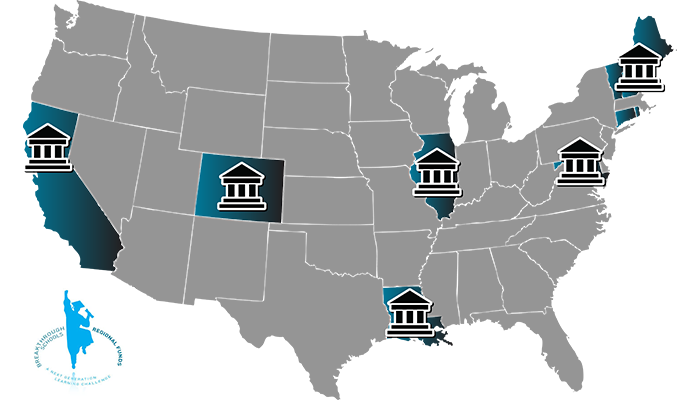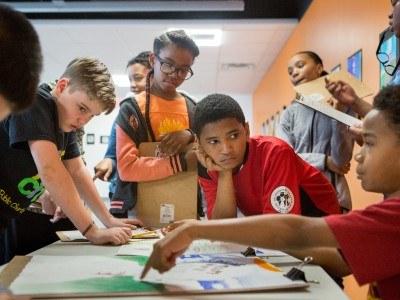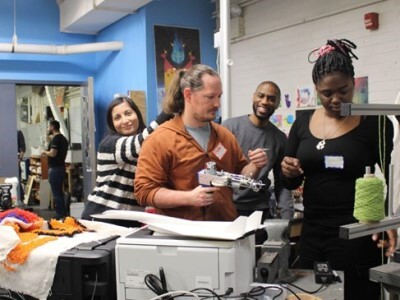Enabling Change
Integration vs. Breaking Out of the Box
Topics

Next generation learning is all about everyone in the system—from students through teachers to policymakers—taking charge of their own learning, development, and work. That doesn’t happen by forcing change through mandates and compliance. It happens by creating the environment and the equity of opportunity for everyone in the system to do their best possible work.
Redesign existing schools or create new schools: which approach to next gen learning design is best? It depends.
Part 3 of 4 of a series of blog posts about the 2014 Regional Funds for Breakthrough Schools.
- Part 1: Educator Entrepreneurs: Big Decisions & Strategies for Success
- Part 2: Top-down Resources vs. Grassroots Culture
- Part 4: Insourcing vs. Outsourcing Teacher Talent
Breakthrough schools are district or charter schools that are either new or already existing. Existing schools rethink and redesign themselves, whereas new schools imagine and design from scratch.
Which approach is best? It depends.
Often, the approaches are driven by contextual factors and both involve tradeoffs.
A few questions illustrate this when thinking about development of breakthrough schools at the city level:
- Is the district leadership and/or policy environment considered a strength on which to build?
- Is the charter sector viable and vibrant?
- Are there key industries (e.g., healthcare, biotech) or community assets like museums or libraries that provide obvious learning connections or opportunities for cooperative development?
- Is the community seeking high quality branded models of learning that don’t currently exist in the local landscape (e.g., Rocketship, Summit, Generation)?
In the D.C. and Chicago pilot phase of NGLC Regional Funds for Breakthrough Schools, local district leaders and teachers were supportive, participated directly and the majority of proposals submitted were for redesigned district schools. Redesigned schools face a number of challenges, engage in complicated work, and can be slow to progress, as noted by K-12 education expert Tom Vander Ark.
Nonetheless, savvy district leaders will leverage local school design competitions as an opportunity to develop a portfolio of schools, to try out waivers for greater school autonomy, and to create teacher-leader and principal advancement pathways. Regional invitations present an ideal opportunity to “tap” willing teacher leaders, and extra capacity offered through the Regional Funds partner. Often the supports offered by the regional partner will help to raise awareness and build foundational skills to advance personalized learning (all at no cost to the district).
Several Regional Funds partners are pursuing a “both and” strategy with regard to developing inside and outside talent and interest. D.C. actively recruited applications from high quality national charter models that didn’t already exist locally, and in addition to working with the district, from individual community leaders interested in addressing unmet local needs (for example, a proposal to start a school serving students in foster care). New Orleans invited new school proposals from teachers and others across the country to participate in an intensive residential “start-up” program supported by 4.0 Schools. This strategy is designed to draw the best and brightest outside talent to New Orleans. New Schools for New Orleans will also run a “within district” strategy to develop local talent and interest.
It will be interesting to see how the best ideas from both the external and internal talent strategies start to mix and cross-pollinate to produce new combinations, new visions and renewed energy in the communities where these schools are located. The six partners’ intermediary role requires them to thoughtful about their local context and reach and to decide on the range of supports to offer.
Depending upon local needs, such supports could include:
- high quality research
- investments in technology and experts
- flexible expenditures for travel and school visits
- individual coaching
- national recruiting
The right combination could provide an incredible boost for urban districts and charter network operators, who possess limited capacity and are taxed by the day-to-day regulatory and operational structures of academic schooling.
As expected, the six sites’ approaches also vary according to context—and it will be exciting to see what types of innovation emerge in this incubator-type environment. If they succeed, your school or district may have a strong proof of concept from which to build your own breakthrough environment.




